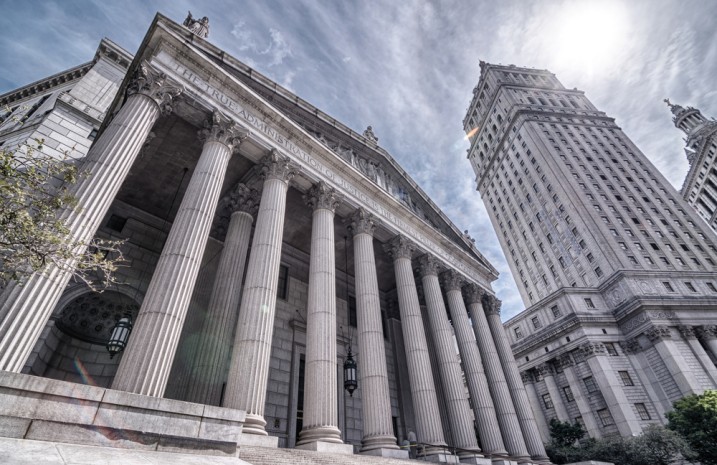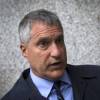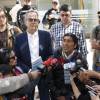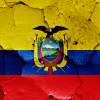Caso Chevron
Second Circuit Snuffs Out Plaintiff Counsel Misconduct
Lexology 24/08/2016

On August 8, 2016, the Second Circuit issued its much awaited decision affirming the ruling of the Southern District of New York, which held that a $9.5 billion judgment obtained in Ecuador against Chevron Corporation by the indigenous Lago Agrio Plaintiffs in an environmental litigation could not be enforced. The Second Circuit’s 127-page decision represents a stunning rejection of virtually every legal argument advanced by Steven Donziger, who the district court found guilty of corrupt practices violative of the civil RICO statute.
The Second Circuit’s decision will provide legal scholars much to discuss. After all, Donziger’s attorneys attacked the decision as unprecedented in that the trial court allowed Chevron, which had lost its case in Ecuador, to use a U.S. district court to attack the foreign damages award. However, at its roots, the Donziger RICO litigation was not really about issues such as jurisdiction or the enforceability of foreign judgments. Rather, it was about Donziger and his legal team’s brazen violations of ethics and norms when it prosecuted the Chevron case in Ecuador. The Second Circuit’s decision demonstrates that the court simply could not abide the evidence of legal misconduct. Specific instances of ethical misconduct by Donziger cited by the Second Circuit include the following examples:
• Instructing his environmental consultant to estimate damages under the faulty assumption that Chevron’s predecessor entity, Texaco, was fully liable for all of the contamination, even after it had left the region. Donziger used what the consultant characterized as a “scientific wild ass guess” in the media to generate settlement leverage.
• Directing Plaintiffs’ environmental consultants to use less probative tests after early environmental testing demonstrated that the pollution was likely not caused by Texaco.
• Submitting to the court reports with falsified experts’ conclusions, including the charge that Texaco’s remediation was “inadequate or insufficient.”
• Paying substantial fees to engineering experts to pose as “independent monitors” without disclosing to Chevron or the court that plaintiffs were paying them, which Donziger characterized in his notes as a “bargain with the devil.”
• Coercing the presiding judge to cancel pollution site inspections due to concern that additional testing would produce pro-Chevron testing results. As coercion, Donziger used knowledge of an accusation that the judge had traded jobs for sex in his court.
• Persuading the court to designate an independent court-appointed expert who would appear to be “independent”, despite being controlled by the Plaintiffs.
• Directing plaintiffs’ environmental consultants to 1) perform the technical work supposedly performed by the court-appointed independent expert and 2) submit the report to the court under the independent expert’s name.
The fundamental weakness of Donziger’s appeal was his utter failure to attack any of the multiple factual bases for the trial court’s decision of nearly 500 pages. Some of the Second Circuit’s most important pronouncements are recitations of age-old legal precepts that are all too often ignored by our nation’s courts.
The appellants argued that any misdeeds by Donziger, however egregious they may have been, did not provide a basis for the district court to nullify their monetary award. They contended that they were unaware of any misconduct and “simply ‘unsophisticated client-principals following the lawyers’ lead’.” In rejecting this argument, the Second Circuit found that there was no basis for arguing that a party ignorant of the fraudulent actions of its lawyer may enforce a fraudulently procured judgment. To do otherwise, the Second Circuit held, would run afoul of the U.S. Supreme Court’s maxim that fraud “is a wrong against the institutions set up to protect and safeguard the public, institutions in which fraud cannot complacently be tolerated consistently with the good order of society.” Thus, the court noted, even innocent clients may not benefit from the fraud of their attorney.
The Hon. Amalya Kearse, writing for the Second Circuit, quoted the district court: “There is no ‘Robin Hood’ defense to illegal and wrongful conduct. And the defendants’ ‘this-is-the-way-it-is-done-in-Ecuador’ excuses–actually a remarkable insult to the people of Ecuador — do not help them. Evidence that Donziger had actively sought a prohibition in Ecuador of the disclosure ordered by the SDNY, the Second Circuit found, was evidence of bad faith and a justification for sanctions. On this basis, the court affirmed the Rule 37 sanctions granted Chevron by the district court. The district court had found the Donziger parties’ “obdurate and quite possibly contemptuous refusal to comply with their discovery obligation” warranted the striking of personal jurisdiction defenses.
A disturbing post-script to the Donziger saga is that, despite the evidence against his ethics, he retains “rock star” celebrity status in certain legal circles. Notably, after the issuance of Judge Lewis Kaplan’s trial court decision, Harvard Law School hosted Donziger at a panel discussion on Ecuadorian rainforest litigation. One may wonder why Donziger was considered a reputable source and deserving of an invitation. In fact, Paul Barrett in Bloomberg Businessweek (August 8, 2016) suggested that Donziger’s Harvard Law hosts ask him the following questions during his visit:
• Why haven’t you rebutted or explained the evidence of fraud, bribery and collusion against you, under oath in a court of law?
• If you did not commit fraud in this case, why did Julio Prieto, one of your Ecuadorian lawyers, email you with fears that if your activities were discovered “all of us, your lawyers, might go to jail”?
• If you did not commit fraud in this case, how do you explain the bank records that show $1,000 was deposited in an Ecuadorian judge’s bank account on several occasions? Why were the deposit slips signed by a staff member of your organization?
• If you did not ghostwrite the Ecuadorian judgment against Chevron, how do you explain that text from your internal work product was found word-for-word, typos and all, in the judgment?
Barrett suspects these questions were not addressed at the panel discussion in light of the tone of their event announcement material. Barrett concludes that “[w]hat we really need to find out is how much credibility should be assigned to the folks at Harvard, rather than Donziger himself, if they are willing to ignore the mountain of evidence against the racketeer and treat him as some sort of human rights crusader and victim of big business retaliation.” Harvard’s embrace of a disgraced lawyer, no matter how noble the underlying intention, raises an important question about the ends served by lending credibility to a non-credible individual.
All too often, in our nation’s mass tort litigation, such as in asbestos litigation, a clear judicial finding of fraud or misconduct does not result in the forfeiture of the party’s damages award. For example, despite clear evidence of plaintiff lawyers “gaming the system” in the Garlock bankruptcy case, many state court asbestos trial judges appear willing to take this misconduct in stride and to go about business as usual. There is little awareness in the defense bar of any judicial initiative to ensure that Garlock-like offenses are not proliferating in their courtrooms. A thorough house cleaning often does not take place in the judiciary until a journalist or an insightful jurist has brought unwelcome attention to the court.
Fuente OriginalNotas relacionadas
-
 Chevron Shakedown Rout
Chevron Shakedown Rout -
 El riesgo de fuga de Donziger va en aumento, según el Segundo Circuito
El riesgo de fuga de Donziger va en aumento, según el Segundo Circuito -
 Empresa china pide indemnización de 480 millones de dólares por Río Blanco
Empresa china pide indemnización de 480 millones de dólares por Río Blanco -
 Samantha Arévalo terminó octava en el Circuito Mundial de Aguas Abiertas
Samantha Arévalo terminó octava en el Circuito Mundial de Aguas Abiertas -
 Antonio Valencia se convierte en ‘youtuber’
Antonio Valencia se convierte en ‘youtuber’ -
 Fitch revises Ecuador's outlook to negative; affirms at 'B-'
Fitch revises Ecuador's outlook to negative; affirms at 'B-'
